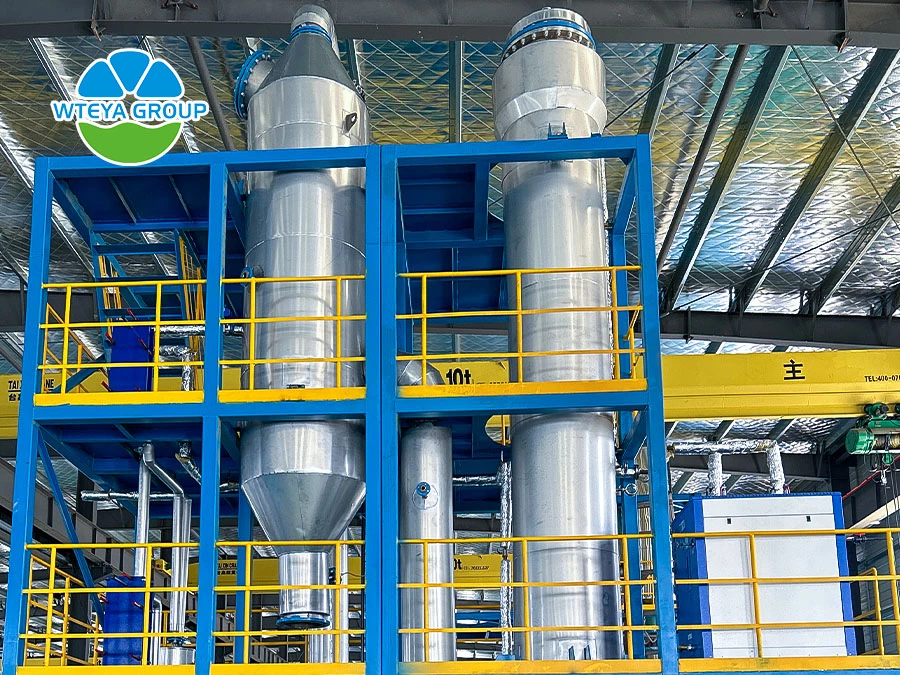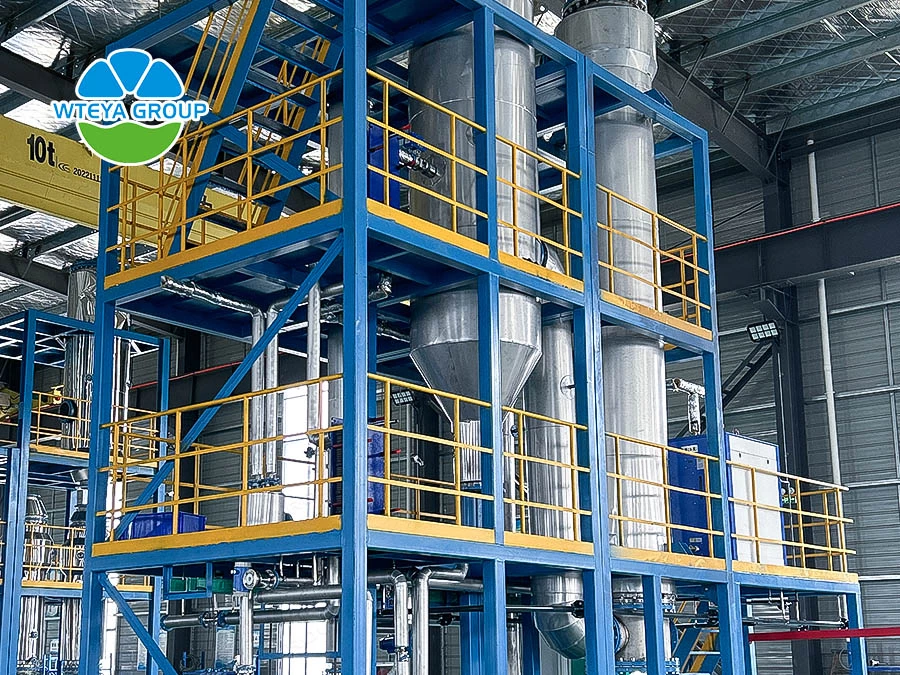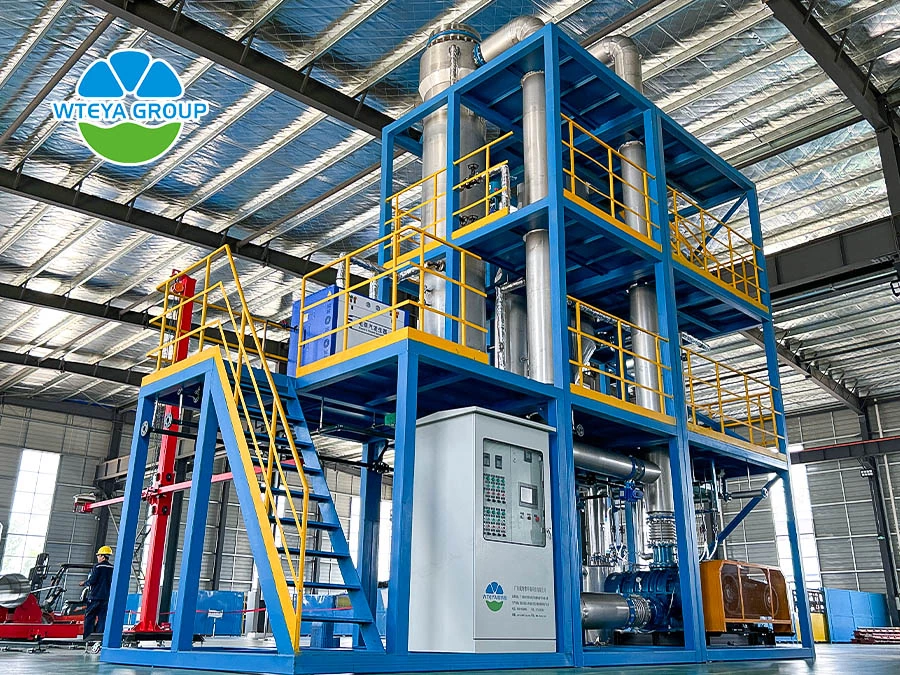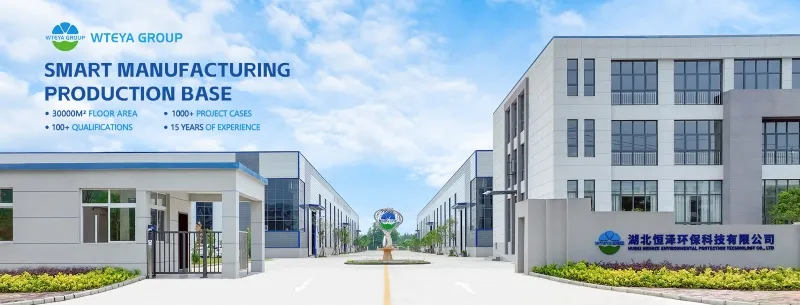Optimizing MVR Evaporator Performance: Causes and Solutions for Low Evaporation Capacity
As an energy-efficient evaporation technology, mechanical vapor recompression (MVR) evaporators are widely used in industrial concentration processes and salt solution evaporation. This technology compresses the secondary steam generated during the evaporation process, increases its pressure and temperature, and reintroduces it into the system as heating steam, thereby significantly reducing external steam demand, energy consumption, and operating costs. However, in actual applications, MVR evaporators sometimes have lower evaporation capacity than expected. This article explores the causes of this problem and provides effective optimization solutions.

Understanding MVR Evaporation Capabilities
Before analyzing the causes of low evaporation rate, two key concepts need to be clarified:
Evaporation capacity: refers to the amount of water evaporated per unit time, which is mainly determined by the heat transfer rate of the evaporator.
Evaporation intensity: refers to the amount of water that can evaporate per unit heat exchange area per unit time, which is an important indicator to measure the performance of the evaporator. The higher the evaporation intensity, the greater the evaporation capacity and the higher the system efficiency.
The efficiency of the MVR evaporator depends on the heat exchange process. The heat transfer rate depends on the heat exchange area, temperature difference, and heat transfer coefficient. If the evaporation capacity of the MVR system is reduced, it usually means that the evaporation intensity is reduced, and the influencing factors need to be analyzed in depth.

Causes and Solutions of Low Evaporation Capacity
1. Insufficient heat exchange area
Problem: Improper heat exchange area design, or scaling and corrosion of the heat exchanger during operation will reduce the effective heat exchange area, thereby reducing the evaporation capacity. In addition, improper system level control will also affect the heat exchange effect - too high a level will hinder the boiling of the solution, while too low a level may cause crystallization and pipe blockage.
Solution: Regularly inspect and maintain the heat exchanger to prevent scaling and corrosion, ensure that the evaporator level is within a reasonable range, and clean it regularly to restore the heat exchange capacity.
2. Low heat transfer coefficient (K value)
Problem: The overall heat transfer coefficient (K value) of the MVR evaporator is affected by the convection heat transfer coefficient on the steam condensation side and the solution boiling side, as well as the fouling thermal resistance. Usually, the heat transfer resistance on the solution side is large, and it is important to improve the convection heat transfer coefficient on the solution side.
Solution: Optimize the evaporator design, increase the flow rate of the forced circulation pump to enhance the convection heat transfer effect of the solution, and ensure the normal operation of the pump. In addition, effective management of non-condensable gases in the system can also help improve heat transfer efficiency.
3. Scaling and crystallization of heat exchangers
Problem: When handling salty solutions, heat exchangers are prone to scaling and crystallization, which increases thermal resistance and reduces heat transfer efficiency.
Solution: Choose a type of heat exchanger that is not prone to scaling, clean the heat exchanger regularly, and use chemical descaling agents. Increasing the forced circulation flow rate can also reduce scaling.
4. Insufficient heat exchange temperature difference
Problem: When the temperature difference between the heating steam and the solution is small, the evaporation intensity will be limited.
Solution: Ensure that the steam temperature rise reaches the best working state by optimizing the compressor performance. In addition, maintain the appropriate vacuum degree in the condenser to enhance the heat exchange efficiency of the system.
5. Concentrated mother liquor accumulation
Problem: During the evaporation process, salt and high-boiling-point substances will continue to accumulate, causing the boiling point of the solution to increase, thereby reducing the effective heat exchange temperature difference and evaporation capacity.
Solution: Regularly discharge part of the concentrated mother liquor and add fresh feed to maintain the optimal concentration and physical properties of the solution.
6. Mechanical failure and corrosion
Problem: Equipment failure, pipeline corrosion,n, and leakage can significantly affect evaporation efficiency.
Solution: Use corrosion-resistant materials, regularly maintain equipment, and replace aging parts promptly to ensure stable operation of the system.

Conclusion
MVR evaporators are a sustainable and efficient solution for industrial wastewater treatment and concentration processes. However, achieving optimal performance requires a comprehensive consideration of factors such as heat exchange area, heat transfer coefficient, scaling issues, and system maintenance. By implementing these optimization measures, MVR evaporators can maintain efficient operation, reduce energy consumption, and extend service life.
WTEYA provides advanced MVR evaporator solutions with intelligent control systems and energy-saving features to ensure efficient and reliable operation, help companies achieve zero wastewater discharge, and significantly reduce operating costs.

Why Choose WTEYA Group?
WTEYA is a high-tech enterprise specializing in evaporation concentration (crystallization) systems and intelligent fluid equipment solutions. With 16 years of focus on the research and development of evaporation, crystallization, separation, and other product technologies, it is an integrated service provider integrating design, manufacturing, installation, commissioning, after-sale,s and operation and maintenance.
WTEYA is committed to zero discharge of industrial wastewater and resource utilization evaporation system as the cor and provides customers with one-stop industrial wastewater treatment zero discharge "turnkey" engineering solutions for electroplating, PCB, metal surface treatment industry, new energy lithium battery industry, semiconductor, coal chemical industry, shale ga,s, and petrochemical industry, and provides evaporation system leasing and operation services.
WTEYA is a brand you can trust. With more than ten years of rich experience, it provides efficient and reliable water treatment solutions for many well-known companies around the world. It has successfully implemented projects for listed companies such as Foxconn, Huawei, Ganfeng, Rongbai, etc., with more than 100 project cases, and has won the trust and praise of customers. Support OEM&ODM customization, and customized solutions to meet your unique needs.
WTEYA is recruiting agents!
Welcome to join us. As a 16-year-old brand, WTEYA provides you with a variety of preferential policies, professional training guidance, and all-around technical support, which is worthy of your trust!
*Email: info@wteya.com
*WhatsApp: +86-18002840855
Let us help you achieve unparalleled water quality!







